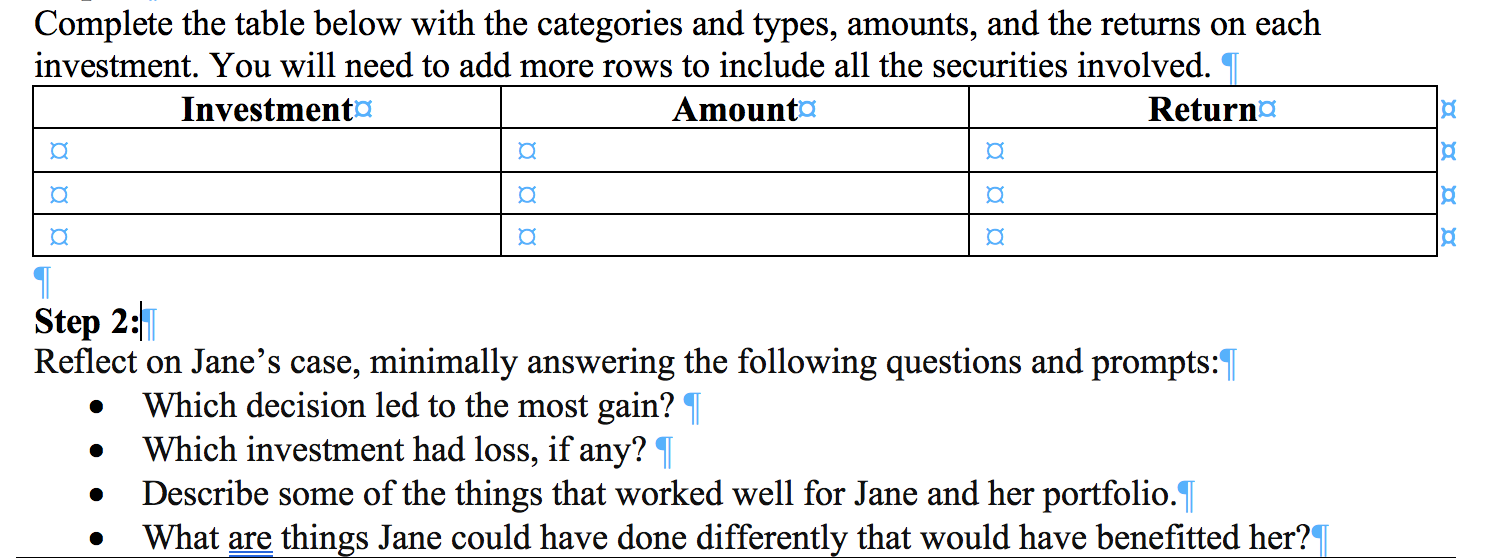Question
Janes Profile: 25 years old Single, and has recently graduated college with a business degree and is currently employed Makes a comfortable living and wants
Janes Profile:
- 25 years old
- Single, and has recently graduated college with a business degree and is currently employed
- Makes a comfortable living and wants to begin investing
- Based on her current salary, Jane estimates that she will be able to contribute $150,000 over the next 20 years in various lump-sums
- Jane wants to take advantage of dollar-cost averaging, so she can realize an average return of 15% annually over the next 20 years
Since Jane is young and independent, she wants to invest in the U.S. stock market, since they historically have a better return than any other investment, and she knows her timeline is long since she has a long time before she will retire. Jane began her investing with a $20,000 lump-sum she had been saving in her bank account after she graduated college several years earlier. She decided initially to invest in large-cap stocks $5,000 in the following four stocks: Microsoft Corp. (MSFT), Bank of America Corp. (BAC), Nike Inc. (NKE), and Pfizer Inc. (PFE). After 4 years, she had saved another $50,000 to invest into her portfolio. She decided to invest $48,000 of this into one of her favorite companies, Netflix Inc. (NFLX). Janes friend Ben, who is an investing enthusiast, convinced her to invest the remaining $2,000 into an indexed option contract (a financial derivative used to speculate on market movements) because of how he described the massive gains possible with a relatively small investment. Specifically, Jane purchased index put options, an instrument used for protecting a portfolio against bear markets/downturns. During the next 16 years following, Jane incrementally invested another $15,000 into the five stocks currently part of her portfolio (MSFT, BAC, NKE, PFE, and NFLX). In addition to this, she invested $5,000 into Amazon.com, Inc. (AMZN). This brings her total invested amount to $150,000 over the course of 20 years.
Over the course of the timeline (20 years), Jane has not sold any of the stocks she originally purchased. Since Jane is now older (forty-five), she spoke with her financial advisor who recommended that she reallocate her portfolios funds to new investments with a different timeline in mind. The first stock Jane sells is her investment in Microsoft, which she sells for $273,665. She then sold her investment in Amazon and Pfizer, for $17,411 and $25,766 respectively. Finally, Jane exits her positions in Netflix, Bank of America, and Nike; which sell for $423,731, $17,650, and $36,323 respectively. The only stock Jane sold for a loss was Bank of America, which lost a lot of its value during the same housing crash mentioned in Case 1. The index option contracts Jane bought 16 years ago were sold for only $150 since they have an expiration date and Jane would rather have sold them for a loss than have them expire worthless. Jane sold these contracts a little more than a year after she purchased them, three months before expiration. The market downturn Jane was planning for never happened within the timeframe of the options expiration, and she felt that she did not know enough about the instruments to continue investing with them (she could have rolled the options over into new ones with a new expiration further out, as opposed to selling them for a loss). Overall, Jane sold her investments for $794,698, netting a ~$645,000 gain (~21.5% annualized return).


Step by Step Solution
There are 3 Steps involved in it
Step: 1

Get Instant Access to Expert-Tailored Solutions
See step-by-step solutions with expert insights and AI powered tools for academic success
Step: 2

Step: 3

Ace Your Homework with AI
Get the answers you need in no time with our AI-driven, step-by-step assistance
Get Started


